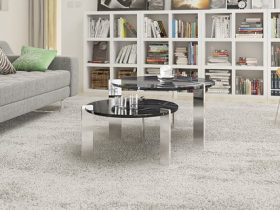Having even a few smart lights in your home can make a difference in making it smarter and more customizable. Smart lighting comes in different sizes and prices ranges. Some have basic features like the ability to be operated with a smartphone while others have a ton of features that may include automatic dimming, color and hue customization, motion detection etc.
Choosing the right smart lighting for your DIY smart home can, therefore, be a bit confusing at least if you don’t consider yourself a nerd with the many options and things you may require. Here are some of the things you need to know first before you start upgrading your home with smart lights and other gadgets.
Let’s start with some tips about purchasing smart lighting and other gadgets for your home in 2020:
1. Don’t Break the Bank
Purchasing the most expensive smart lighting does not guarantee the best experience. Some smart light bulb bundles are normally listed for as high as $70 for each lightbulb, not to mention the additional accessories you might need to unlock all the fancy features included. You are better off purchasing two or three fancy smart lights and combine them with a dozen simple smart bulbs with basic features like dimming and dynamic intensity.
2. Where Will You Be Using Them?
There are smart lighting fixtures and accompanying items that are meant for commercial spaces and offices while others are to be used at home, in entertainment areas and outdoors. Knowing where you will be using the smart lighting would help you decide what kind to buy and probably save a lot of money. For instance, you can search for smart building lighting if you will be installing them in a commercial building or office.
Buying smart bulbs with the full range of colors, moods and hues for office wouldn’t make a lot of sense because you won’t use all the included features. Smart lighting manufacturers often have lights specifically marketed for commercial clients that are normally brighter and made for large open spaces.
3. What Features Are You Interested In?
There are smart light bulbs that can help set the mood for a party, while others are made to help you sleep well. Other light bulbs can change colors with the swipe of a finger while others can dim or increase light intensity depending on the amount of ambient light in a room.
You need to know what features are available on a smart lighting system before you make a purchase decision. Some of then more expensive and fancy smart lighting kits have hundreds of features accessible using a smartphone app. Others can be controlled from anywhere you are so long as you have an internet connection while others use Bluetooth and can’t be controlled remotely.
Smart Lighting Essentials- What You Need
Buying a single smart lighting device may not help enhance your DIY smart home experience. You may need to buy some accompanying accessories such as hubs, smart speakers and download some apps to enjoy the full experience. At the same time, you should decide which platform you are going to use (Google Nest Home, Philips, Amazon, Samsung, Logitech) and purchase smart lights that are compatible with it.
Luckily, most smart lighting manufacturers often bundle their products in a single kit which makes it easier for non-techie DIY smart home installers to install them. Here are some of the things you might need to purchase for your smart lighting system:
Smart Lighting Starter Kit
A starter kit normally comes with one or two smart bulbs and a hub that you will need to connect to via Bluetooth or Wi-Fi to control your lighting. This might vary from manufacturer to manufacturer. You will need to connect the hub to your router to use the accompanying smartphone app. Of course, there are cheaper alternatives that don’t need any hub and come as standalone bulbs or with a simple controller
A Smart Home Hub
Buying a smart home hub such as the Amazon Echo or Google Nest Hub would help enhance your experience with the smart lighting.
Installing smart lighting in your home or office would make your life easier and more fun. Take time to plan the whole setup before you start installing. Have fun!















Leave a Reply